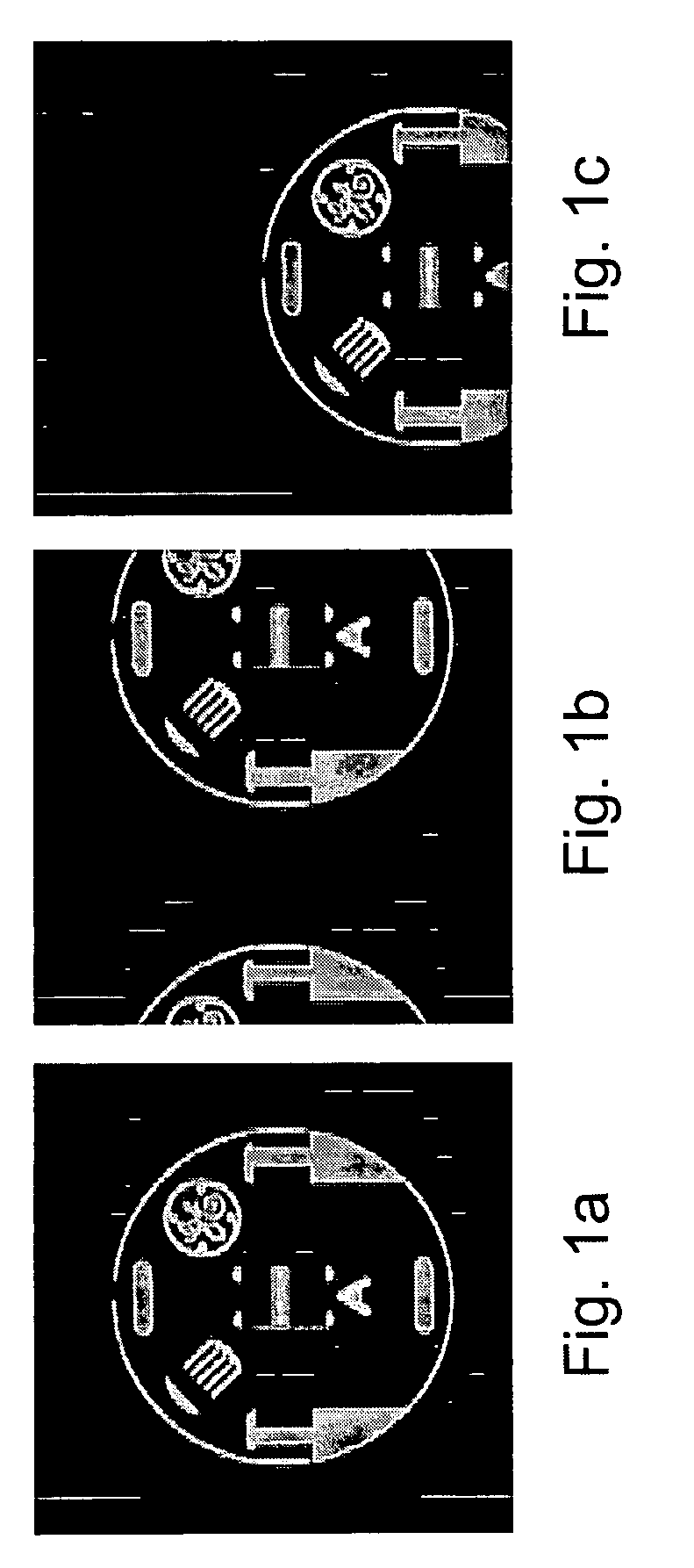Synthetic aperture MRI
a technology of synthetic aperture and magnetic resonance, applied in the field of magnetic resonance imaging, can solve the problems of introducing new artifacts such as spurious ringing and snr loss into the image, reducing the snr, and reducing the k-space sampling rate of k-space, and achieve accurate estimation.
- Summary
- Abstract
- Description
- Claims
- Application Information
AI Technical Summary
Benefits of technology
Problems solved by technology
Method used
Image
Examples
Embodiment Construction
[0049]The Synthetic Aperture MRI (SAMRI) process according to the invention is based on concepts derived from Synthetic Aperture (SA) radar and SR imaging. The SAMRI process uses repeated imaging together with information about an aperture function—or point-spread function—to increase the SNR of a synthesized magnetic resonance image. The SAMRI process combines information from a plurality of low-resolution images with a Field Of View (FOV) shifted by distances less than a pixel width to create a synthesized image having substantially improved image quality. Information from the low-resolution images is merged and application of a deconvolution process enhances the SNR of the synthesized image. It was found that the synthesized image had a higher SNR and is a substantially accurate representation of the object being imaged.
[0050]The discretization of the analog MR signal plays a significant role in the data acquisition for the SAMRI process. MR data is collected as a continuous time...
PUM
 Login to View More
Login to View More Abstract
Description
Claims
Application Information
 Login to View More
Login to View More - R&D
- Intellectual Property
- Life Sciences
- Materials
- Tech Scout
- Unparalleled Data Quality
- Higher Quality Content
- 60% Fewer Hallucinations
Browse by: Latest US Patents, China's latest patents, Technical Efficacy Thesaurus, Application Domain, Technology Topic, Popular Technical Reports.
© 2025 PatSnap. All rights reserved.Legal|Privacy policy|Modern Slavery Act Transparency Statement|Sitemap|About US| Contact US: help@patsnap.com



